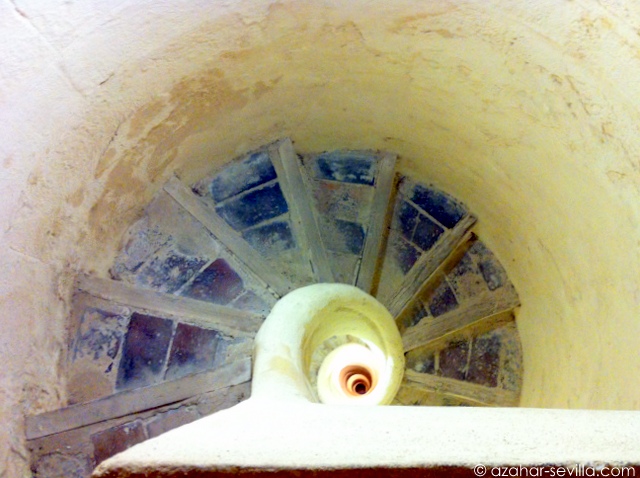
I never learn! Remember when I did that fabulous Cathedral rooftop tour a couple of years ago and ended up totally panic-stricken quivering wreck? Well apparently I hadn’t remembered when I booked a night time tour of the crypts and rooftops of the impressive Church of El Salvador, the second largest in Sevilla (the first being the Cathedral, natch). And so it was that I found myself outside El Salvador shortly before 10 o’clock on a hot August night, waiting for our guide.
The site of the church has a history of use for important public and religious buildings that goes much further back than that of its big sister, and is closely entwined with the life and history of the city itself.
In Roman times, it was the site of the Basilica, the most important public building in a Roman city. It first became a church during the time of the Visigoths in the 6th century, and remained so for some time after the city was conquered by the Moors, Berber Moslems from North Africa. In 879 it became the city’s Grand Mosque, Ibn Adabbas, and the focus of its religious life, while the streets around it, that formed the Zoco, or market, were its commercial hub. Later, as the city grew, a new Grand Mosque was built where the Cathedral stands today. Later still, in 1248, the Christians reconquered the city and the Mosque was rededicated and partially rebuilt as a church (incidentally making it one of the few to have completed the cycle from church to mosque and back again. By 1671 the building was in a ruinous state, and the decision was taken to demolish it. The church we see today was completed in 1712. In the last ten years there has been extensive restoration work, especially to the crypts, that has uncovered many interesting things related to the church’s past, and motivated the night tours that are allowing interested Sevillanos and visitors the opportunity to learn more about this unique heritage.
Our tour started in the patio, where we could see the half-buried original Moorish pillars and the old minaret, now topped, like the Giralda, by the bells of the Christian church, before our adventure began in earnest, with our guide leading us down into the crypts below the church.
I had half-expected this part of the experience to be a bit claustrophobic, but in fact the space was surprisingly open and well-lit, with air-conditioning and new concrete structural supports for the building above as well as the old brick walls and arches, and some of the original tiled flooring of the building’s earlier incarnations. The most touching part of the experience, though, was learning that hundreds, or even thousands of unnamed burials, including many of very young children, had taken place here. We also discovered that a buried stream (now partly exposed) ran through the foundations, and was the source of the problems that had led to the decision to undertake work on the church.
Back above ground we passed through the main body of the church, with its impressive retablos or altarpieces, to stand in front of the statue of the church’s patroness, the Virgin of the Waters, who sits in a little chamber halfway up one wall of the church. We reached the chamber itself (the camarín) by way of a small stairway to one side – it’s a slightly odd feeling to look down into the church from behind the statue.

On then to the second half of the tour, and a climb up a narrow spiral staircase, first to the balconies inside the church (which gave me a touch of vertigo, but nothing too serious), and then on up two more spiral stairways to the roof, where we did a complete circuit. From up here you can see all the major landmarks of the city, including the Cathedral, the Metropol Parasol and, a bit jarringly, the new Torre Pelli (I don’t think I’ll ever get used to that one). I’m afraid it was at this point I kind of lost it and remembered why I shouldn’t go walking around on high rooftops with vasty views, but with a lot of deep breathing I managed to keep going and even got a few nice photos. So it was a relief when we made our way back down the narrow staircases and I soon was safely back on terra firma, feeling very glad to have had the opportunity for such an unusual and interesting experience. Knowing me, I’d even do it again.
La Huella de lo Sagrado guided tour costs 12 euros and takes place with a minimum group of 10 people; the night tours are available until September 15th, though day tours are available year round. They are only offered in Spanish but even without understanding the guide I think that it is still visually worthwhile. To reserve a place, go to the Cathedral Reservations Page.
Some photos below (click on one to start slide show)…
Continue reading “Salvador Church Night Tours” →






